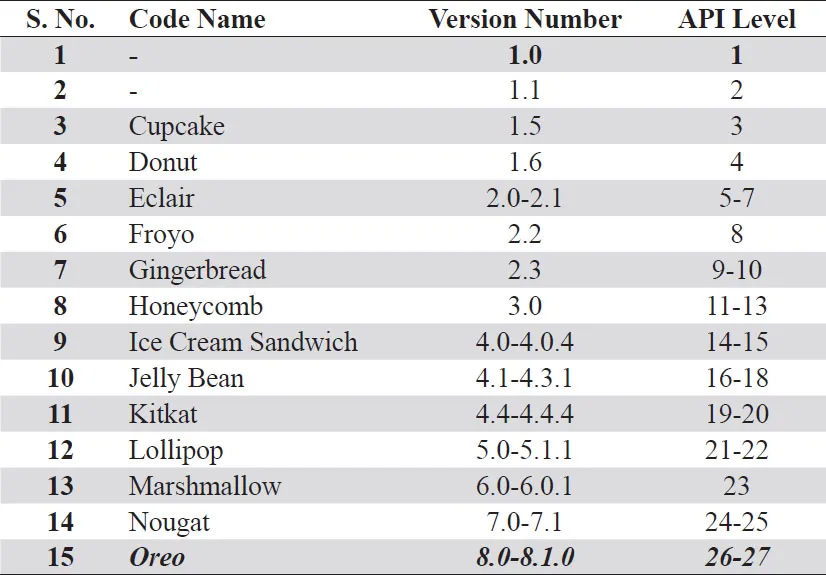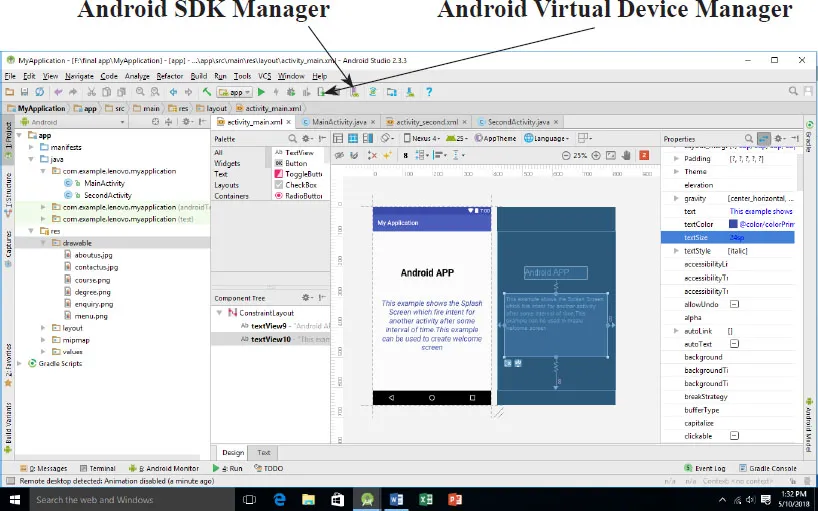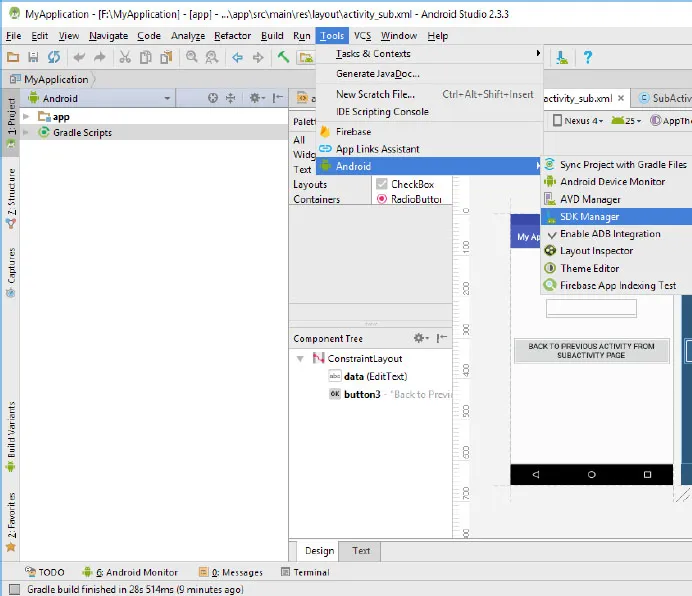
- English
- ePUB (mobile friendly)
- Available on iOS & Android
About This Book
Build Android apps starting from zero programming experience Key Features
- Comprehensive coverage of Android lying more stress on examples
- The book covers the topics in simple and easy form taking practical examples in each topic
- Simple language, crystal clear approach, straight forward comprehensible presentation
- Adopting user-friendly classroom lecture style
- The concepts are duly supported by several examples
- The book cover the topics in a manner which fulfilled the skill gap among industry and academia
Description
The book has been written in such a way that the concepts are explained in detail, giving adequate emphasis on examples. To make clarity of the programming examples, logic is explained properly as well as discussed using comments in program itself. The book covers the topics right from the Introduction of the Android Studio and writing programs into it. The Android topics are discussed in detail taking into consideration the practical examples from simple to complex for the better understanding of students. Various sample practical exercises are included in the Book and their solutions so as to give students the basic idea of developing apps in Android. The examples given in book are user-focused and have been highly updated including topics, figures and examples.
The book features more on practical approach with more examples covering topics from simple to complex one addressing many of the core concepts required at the beginner level. What You Will Learn
- Toasts, Activity, Dialogs, Intent, Android Life Cycle, Menus
- Asynchronous Task, Recycler-view, Broadcast Receiver and Notification
- Shared Preferences, Sqlite Database, Alarm Manager, Android Services, Testing Activity, Publishing App
-
Who This Book is For
Students pursuing BE/BSc/ME/MSc/BTech/MTech in Computer Science Table of Contents
1. Introduction
2. Toast
3. Activity
4. Dialogs
5. Intent
6. Android Life Cycle
7. Menus
8. Asynchronous Task
9. Recyclerview
10. Broadcast Receiver and Notification
11. Shared Preferences
12. Sqlite Database
13. Alarm manager
14. Android Services
15. Testing Activity
16. Publishing App
17. Appendix I
18. Exercise 1
19. Appendix II About the Author
Pratiyush Guleria has done M.Tech in Computer Science with a Gold Medal, B.Tech in Information Technology and MBA Degree in Operation Research from Indira Gandhi National Open University (IGNOU). He has qualified SLET (State Level Eligibility Test) and has more than nine years of experience in IT Industry and Academics. He has, to his credit, approximately 25 research papers in peer reviewed International Journals and Conferences and has been the Technical Program Committee Member and reviewer for journals and International Conferences. His research interests include Data Mining Machine Learning and Web Technologies. He is also recipient of "Young Scientist Award" for best paper presentation in one of the International Conference. LinkedIn Profile: linkedin.com/in/pratiyush-guleria-2a944157
Frequently asked questions
Information
Chapter 1
Introduction
1.1 Know about Android







1.2 Let’s Start with Simple User Interface:




Table of contents
- Cover Page
- Title Page
- Copyright Page
- Preface
- Acknowledgement
- Table of Contents
- Chapter 1 Introduction
- Chapter 2 Toast
- Chapter 3 Activity
- Chapter 4 Dialogs
- Chapter 5 Intent
- Chapter 6 Android Life Cycle
- Chapter 7 Menus
- Chapter 8 Asynchronous Task
- Chapter 9 Recyclerview
- Chapter 10 Broadcast Receiver and Notification
- Chapter 11 Shared Preferences
- Chapter 12 Sqlite Database
- Chapter 13 Alarm manager
- Chapter 14 Android Services
- Chapter 15 Testing Activity
- Chapter 16 Publishing App
- Appendix I
- Appendix II